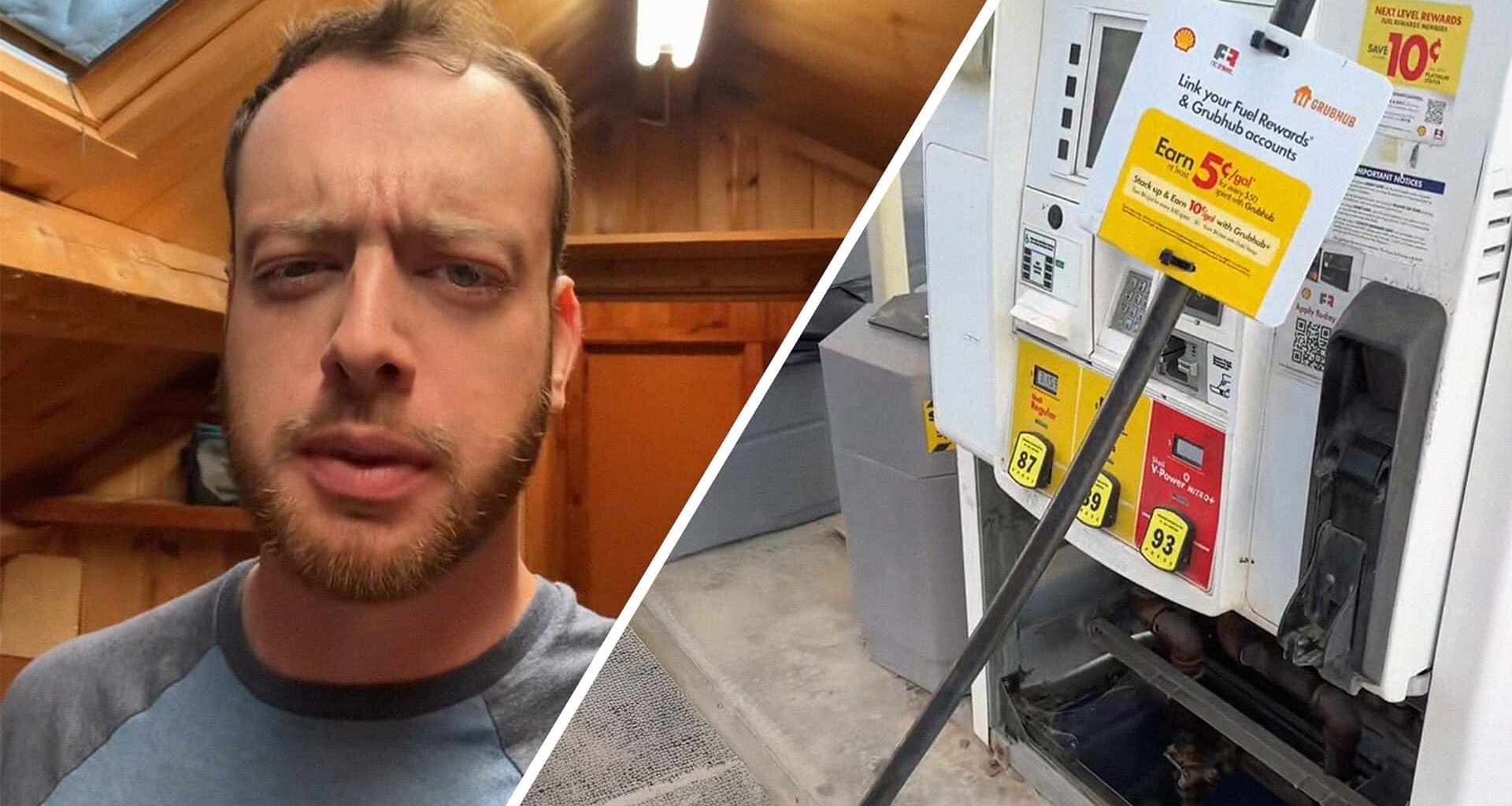When a man spotted just two pipes running from the ground into a three-grade fuel pump, he asked a question that earned him plenty of snark online. But here’s the thing: He wasn’t wrong to wonder. If you’ve ever chosen mid-grade gas, you’ve unknowingly been part of a clever little chemistry experiment.
In a clip that’s been viewed more than 3 million times, TikToker Jesse Miller (@jess_m603) looks at the exposed piping on the gas pump he’s using and wonders aloud why only two pipes are feeding into the pump from the underground storage tanks.
He asks, “Does anyone want to explain to me why there’s two pipes that go in, but there’s three (octane) options?”
What Miller stumbled upon is actually how most gas stations across the U.S. work. Despite offering three fuel grades (typically 87, 89, and 91 or 93 octane), many stations only store two types of gasoline underground: regular (87 octane) and premium (91 or 93 octane).
The midgrade option isn’t stored separately; instead, it is created at the pump by blending the other two.
This is a standard, regulated practice in the industry, not some shady corner-cutting maneuver. The pump blends the two fuels in real-time to create a consistent mid-grade option, all under the control of precision hardware and software.
How Blended Midgrade Fuel Works
Midgrade blending typically occurs either in the pump’s metering chamber or in the fuel line leading to the nozzle. The proportions are managed by the dispenser’s onboard software, which adjusts the mix according to the octane rating selected by the customer.
For mid-grade, that might mean dispensing 50% regular fuel and 50% premium, although the exact ratio can vary depending on the specific grades used.
The process is highly regulated. Blended fuel must meet strict octane accuracy standards enforced by state Weights and Measures programs. Pump calibration must be accurate to within a fraction of an octane point. Local agencies routinely inspect these dispensers to ensure compliance with these standards.
The practice of blending fuel at the dispenser is a carefully engineered solution that reduces costs and simplifies operations at fuel stations. Most stations are designed with just two underground storage tanks.
Having fewer tanks also means fewer potential failure points. With less hardware underground, there is a reduced risk of environmental contamination from tank leaks, and fewer inspections are needed to stay in compliance with state and federal regulations. According to the American Petroleum Institute, minimizing underground storage complexity helps operators reduce long-term environmental liability and operating overhead.
For station owners, using pump-blending technology also means greater flexibility. Instead of dedicating a third tank to mid-grade fuel, something that may sell less frequently, they can create it only when needed, optimizing space and costs without compromising fuel quality.
Is It Legit? Or a Scam?
Miller’s post solicited a lot of jokes, some at his expense.
One person jested that the pipes pump Coca-Cola and water. Another jibed, “Same reason why your sink can do hot, cold, and warm.”
A third wrote, “Hold onto your hat, but if you go even farther there’s only one hose.”
Despite the suspicions and jokes in the comments, there’s no deception involved in this process.
Fuel blending at the pump is a well-established and legal practice in the United States, regulated by both federal and state agencies. Each state maintains its own Weights and Measures program, which is responsible for inspecting fuel pumps, verifying accuracy, and ensuring compliance with labeling and volume regulations.
Dispenser calibration is regularly tested to ensure that the proper octane levels are being delivered. Violations, such as dispensing under-octane fuel or shorting customers on volume, can result in significant fines or temporary shutdowns. Consumers are protected not only by automated systems inside the pumps themselves, but by regular oversight and enforcement from local regulators.
Motor1 reached out to Miller via direct message. We’ll update this article if he responds.

